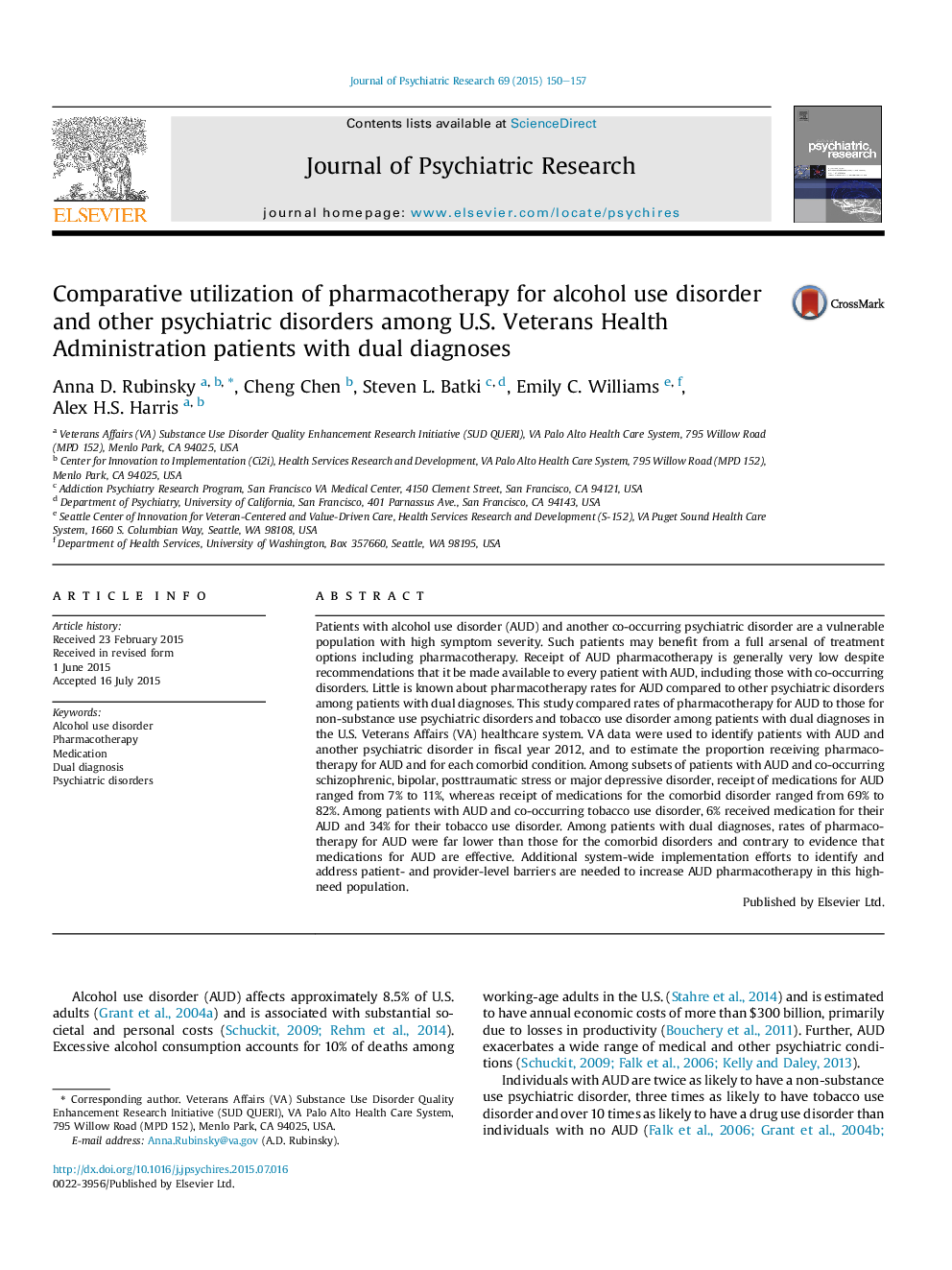| Article ID | Journal | Published Year | Pages | File Type |
|---|---|---|---|---|
| 6800336 | Journal of Psychiatric Research | 2015 | 8 Pages |
Abstract
Patients with alcohol use disorder (AUD) and another co-occurring psychiatric disorder are a vulnerable population with high symptom severity. Such patients may benefit from a full arsenal of treatment options including pharmacotherapy. Receipt of AUD pharmacotherapy is generally very low despite recommendations that it be made available to every patient with AUD, including those with co-occurring disorders. Little is known about pharmacotherapy rates for AUD compared to other psychiatric disorders among patients with dual diagnoses. This study compared rates of pharmacotherapy for AUD to those for non-substance use psychiatric disorders and tobacco use disorder among patients with dual diagnoses in the U.S. Veterans Affairs (VA) healthcare system. VA data were used to identify patients with AUD and another psychiatric disorder in fiscal year 2012, and to estimate the proportion receiving pharmacotherapy for AUD and for each comorbid condition. Among subsets of patients with AUD and co-occurring schizophrenic, bipolar, posttraumatic stress or major depressive disorder, receipt of medications for AUD ranged from 7% to 11%, whereas receipt of medications for the comorbid disorder ranged from 69% to 82%. Among patients with AUD and co-occurring tobacco use disorder, 6% received medication for their AUD and 34% for their tobacco use disorder. Among patients with dual diagnoses, rates of pharmacotherapy for AUD were far lower than those for the comorbid disorders and contrary to evidence that medications for AUD are effective. Additional system-wide implementation efforts to identify and address patient- and provider-level barriers are needed to increase AUD pharmacotherapy in this high-need population.
Related Topics
Life Sciences
Neuroscience
Biological Psychiatry
Authors
Anna D. Rubinsky, Cheng Chen, Steven L. Batki, Emily C. Williams, Alex H.S. Harris,
